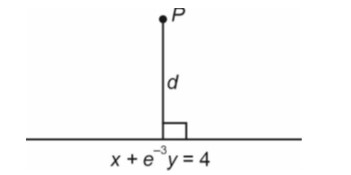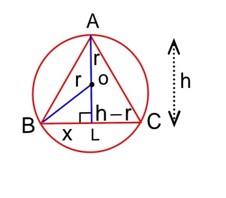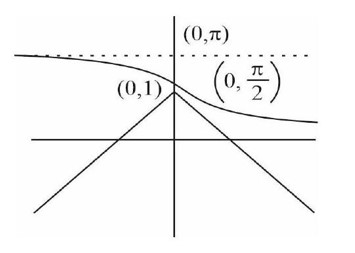Inverse Trigonometric Functions
Get insights from 106 questions on Inverse Trigonometric Functions, answered by students, alumni, and experts. You may also ask and answer any question you like about Inverse Trigonometric Functions
Follow Ask QuestionQuestions
Discussions
Active Users
Followers
New answer posted
2 months agoContributor-Level 10
(3x2 − 3)
= ⋅ 3(x −1)(x +1)
For x ∈ (−∞, −1], f '(x) ≥ 0
∴ f(x) is increasing function
∴ a = e–∞ = 0 = f (−∞)
b = e−1+3+1 = e3 = f (−1)
∴ P(4, e3 + 2)

New answer posted
3 months agoContributor-Level 10
From option let it be isosceles where AB = AC then
=
Now ar
then
So .
Hence be equilateral having each side of length

New answer posted
3 months agoContributor-Level 9
So, f (x) is decreasing function and range of f (x) is
which is
Now 4a – b = 4 (p + 5) - (5p + 9) = 11 - “π”
New answer posted
3 months agoContributor-Level 10
T? = cot? ¹ (2²? ¹ + 1/2? ) = cot? ¹ (1 + 2²? ¹)/2? ) = tan? ¹ (2? / (1 + 2²? ¹)
T? = tan? ¹ (2? ¹ - 2? ) / (1 + 2? ¹ . 2? ) = tan? ¹ (2? ¹) – tan? ¹ (2? )
S∞ = π/2 - tan? ¹ (2) = cot? ¹ (2) = tan? ¹ (1/2)
New answer posted
3 months agoContributor-Level 10
Solve sin? ¹ (3x/5) + sin? ¹ (4x/5) = sin? ¹x.
Using the formula sin? ¹a + sin? ¹b = sin? ¹ (a√ (1-b²) + b√ (1-a²):
sin? ¹ ( (3x/5)√ (1 - (4x/5)²) + (4x/5)√ (1 - (3x/5)²) ) = sin? ¹x
(3x/5) * √ (1 - 16x²/25) + (4x/5) * √ (1 - 9x²/25) = x
x * [ (3/5) * √ (25-16x²)/5 + (4/5) * √ (25-9x²)/5 - 1 ] = 0
So, x = 0 is one solution.
For the other part:
3√ (25-16x²) + 4√ (25-9x²) = 25
Let's check integer solutions. If x = 1:
3√ (9) + 4√ (16) = 33 + 44 = 9 + 16 = 25. So x = 1 is a solution.
If x = -1:
3√ (9) + 4√ (16) = 25. So x = -1 is a solution.
The solutions are x = 0, 1, -1.
Related Tags
New answer posted
3 months agoContributor-Level 10
Given f (x) = ax^2 + bx + c.
f (-1) = a - b + c = 2
f' (x) = 2ax + b, so f' (-1) = -2a + b = 1
f' (x) = 2a, so f' (-1) = 2a = 1/2
From 2a = 1/2, we get a = 1/4.
Substituting a into -2a + b = 1: -2 (1/4) + b = 1 => -1/2 + b = 1 => b = 3/2.
Substituting a and b into a - b + c = 2: 1/4 - 3/2 + c = 2 => -5/4 + c = 2 => c = 13/4.
So, f (x) = (1/4)x^2 + (3/2)x + 13/4 = (1/4) (x^2 + 6x + 13).
We need to find f (1):
f (1) = (1/4) (1^2 + 6 (1) + 13) = (1/4) (1 + 6 + 13) = (1/4) (20) = 5.
Taking an Exam? Selecting a College?
Get authentic answers from experts, students and alumni that you won't find anywhere else
Sign Up on ShikshaOn Shiksha, get access to
- 66k Colleges
- 1.2k Exams
- 680k Reviews
- 1800k Answers

